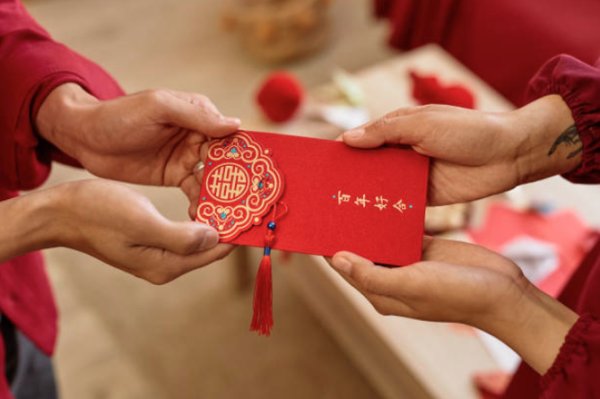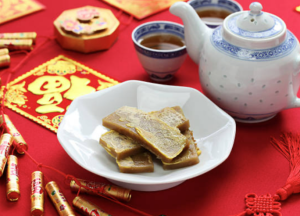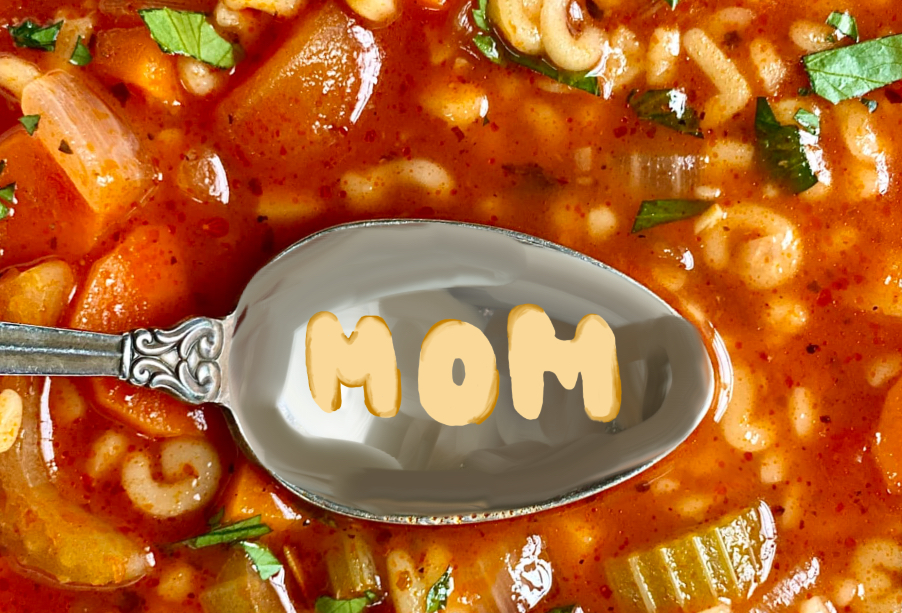The ball drops in Times Square to celebrate the new year. But elsewhere, a person holds a coin from a cake, another smashes a plate, and a third finishes twelve grapes. Then, with the first new moon cycle, the new year is celebrated again, this time with red envelopes and fried cakes, blessing families with prosperity and fortune. To celebrate the different ways South High welcomes the new year, learn about five New Year or Lunar New Year traditions from around the world.
Vasilopita Cakes
By Cassandra Zheng

As you take a bite of the cake, your teeth instantly hit something hard. You gasp in delight as you slowly pull out the glittering coin that you’ve always longed for. In many Greek households, the vasilopita cake is traditionally eaten on New Year’s Day to celebrate the arrival of another year. Along with its fluffy texture and hints of tangy citrus, one vasilopita cake hides an embedded coin, randomly placed inside after baking. The cake is topped off with a coat of creamy vanilla glaze before the slices are cut and passed around. The individual who finds the coin within their slice is said to be blessed with luck for the rest of the year.
Although there are many versions concerning the origins of this tradition, they all share the common theme of honoring St. Basil’s generosity. While the city of Caesarea was under siege, St. Basil is believed to have gathered the valuables of the citizens to stop the attack. After the enemy retreated, St. Basil inserted the citizens’ belongings into loaves of bread for distribution around the city, allowing everyone to miraculously regain their possessions. Because of the saint’s noble act, the vasilopita cake directly translates to “sweet bread of Basil” in Greek.
Breaking Plates
By Eric Chen

On New Year’s Eve, Danish people smash old, cracked, or chipped plates in front of their friends’ and neighbors’ doors to bring them good luck in the new year. They believe that the more dishes there are piled up in front of someone’s doors when that person emerges from their home following the New Year, the more luck that person will receive. This tradition originated in the nineteenth century and emerged as a way for people to let go of their grudges and show appreciation and affection for one another. It was also believed that smashing old or broken plates would remove negative energy and experiences from the past year and make way for positive experiences in the coming year. Smashing plates is a tradition widely practiced not only in Denmark but also in other Germanic countries. However, this tradition has fallen out of favor and is seldom practiced today.
The 12 Grapes
By Fiona Fung

Dating back to the late nineteenth century in Spain, the New Years’ custom of eating twelve grapes is now celebrated by millions of people around the globe. The custom began around 1895 but was popularized in 1909 when Alicantese farmers encouraged the tradition to increase sales from an abundant grape harvest. Those who participate in this tradition eat twelve grapes when the clock strikes midnight on New Years’– one grape for each chime, each grape representing one month. Successfully eating the twelve grapes within the minute is said to bring good luck and success for the new year. Today, families gather under tables on December 31st with grapes in hand—when it’s midnight, they’ll all pop grapes into their mouths, wishing for luck for the new year.
Red Envelopes
By Irena Jiang

Red envelopes, also known as “hóng bāo” in Mandarin or “laisee” in Cantonese, are often given to family or friends during Lunar New Year to celebrate good fortune and prosperity for the upcoming year. The envelopes are filled with new dollar bills ranging from around $5 to $200, the amount increasing depending on the relationship between the giver and receiver. These red packets are traditionally gifted from the elders and the married to younger and unmarried family members to represent the bestowing of blessings and the strengthening of relationships. As children eagerly wait for red envelopes with both open hands, they chant the phrase, “Gōng Xǐ Fā Cái,” meaning “best wishes for a prosperous year.” The tradition dates back to the Han dynasty and originated from the legend of the demon Sui and the myth of the legendary beast Nian, who were said to terrorize children on New Year’s Eve. Parents would give their children coins threaded with red string and wear red clothing to ward off these evil beings, creating the custom that is so well-known around the world today.
Rice Cakes
By Madison Jing

Gooey, flavorful, and comforting with a delicate sweetness, rice cakes are an essential culinary delight on the Lunar New Year menu. Who would have thought that this simple and plain-looking treat could make your taste buds sing, and your stomach fill with joy? Sharing this staple connects families and makes Lunar New Year an unforgettable holiday.
Legend has it that rice cakes originated during the Warring States period of Chinese history. When Goujian of the Yue state invaded the capital city of Wu, the people of Wu were trapped and starving. Fortunately, the Wu soldiers discovered that the foundation of the city’s walls was actually made of glutinous rice flour, the key ingredient for creating delicious rice cakes. Their fortuitous uncovering helped save the masses.
Known as nián gāo (年糕) in Chinese, the name “rice cake” consists of characters that carry special meanings. The word “nián” means “year,” while “gāo” means “elevated.” Combined, these two words explain why the Chinese view eating rice cakes as an important part of the Lunar New Year tradition, as it helps bring good luck to the people throughout the new year and lifts them to new heights in all their endeavors.







